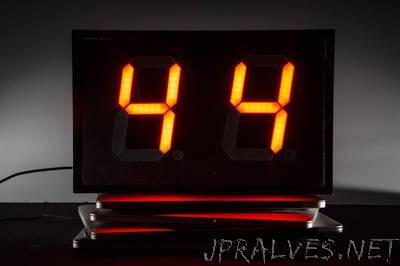

For subsequent scans, only new or modified files are inspected. Run the following command: Stop-AIPScanįor the first scan cycle, the scanner inspects all files in the configured data stores. To stop a currently running scan before it's complete, use either of the following methods: If you've performed these steps after an initial configuration and installation, continue with Configure the scanner to apply classification and protection. If you want to store reports in a different location, consider using a directory junction for the folder.įor example, use the Mklink command: mklink /j D:\Scanner_reports C:\Users\aipscannersvc\AppData\Local\Microsoft\MSIP\Scanner\Reports The report folder location or name can't be changed. Changing log levels or locationsĬhange the level of logging by using the ReportLevel parameter with Set-AIPScannerConfiguration.
#Pi network scanner update#
Then, update your configuration automatically, and optionally protection. If that's the case, reconfigure the conditions as needed, and repeat this procedure until you're satisfied with the results. If the results are still not as you expect, you might need to reconfigure the conditions that you specified for your labels. If you don't see any labels applied, check that your label configuration includes automatic rather than recommended classification, or enable Treat recommended labeling as automatic (available in scanner version 2.7.x.x and above). This configuration means that only files that meet the conditions you've configured for automatic classification are included in the detailed reports. Initial configurations instruct you to set the Info types to be discovered to Policy only. If you need to see the results of previous scans, return to the reports that are stored on the scanner computer, in the % localappdata%\Microsoft\MSIP\Scanner\Reports folder. The admin portal displays information about the last scan only. For more information, see Analytics and central reporting for Azure Information Protection. Scanners send collected data information to Microsoft Purview Information Protection every five minutes, so that you can view the results in near real time from the admin portal. When a scan is completed, a Summary_.txt file is created with the scan summary. This folder stores up to 60 reports for each scanning cycle and all but the latest report is compressed to help minimize the required disk space. csv files have more details for each file. txt summary files include the time taken to scan, the number of scanned files, and how many files had a match for the information types. When the scan is complete, review the reports stored in the % localappdata%\Microsoft\MSIP\Scanner\Reports directory. Run Get-AIPScannerStatus to monitor the status change. Wait until you see values for the LAST SCAN RESULTS column and the LAST SCAN (END TIME) column. On the Information protection scanner - Content scan jobs pane, select Refresh. Use the Microsoft Purview compliance portal. The scan completes when the scanner has crawled through all the files in the specified data stores.ĭo either of the following to monitor scanner progress: Wait for the scanner to complete its cycle. The Scan now option only appears once a content scan job is selected. On the Information protection scanner - Content scan jobs pane, select your content scan jobs, and then select the Scan now option. Perform these steps again as needed when your content changes.ĭo either of the following to start a content scan job: Use the following procedure after you've configured and installed your scanner to get an initial understanding of your content. Run a discovery cycle and view reports for the scanner While most customers will perform these procedures in the admin portal, you may need to work in PowerShell only.įor example, if you are working in an environment without access to the Azure portal, such as Azure China 21Vianet scanner servers, authenticate to the AzureInformationProtection PowerShell module, and then continue with instructions in this article for PowerShell only.


 0 kommentar(er)
0 kommentar(er)
